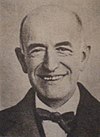深沈之歌比賽
来自维基百科,自由的百科全书
深沈之歌比賽(El Concurso del Cante Jondo)是歷史上一個重要的佛朗明哥比賽,於 1922 年6月 13、14日的基督聖體聖血節,在西班牙安達魯西亞的格拉那達舉行。
法雅的目的
西班牙古典音樂作曲家法雅(1876–1946), 是這次比賽的主要策劃人。他希望鼓勵推廣已經陷入低潮的佛朗明哥表演。法雅認為佛朗明哥是一種相當有價值的藝術形式,花了許多時間研讀佛朗明哥音樂。身為一個加地斯人,法雅從吉普賽的朋友、歌手、吉他手聽到佛朗明哥。法雅認為爭取菁英份子的支持是很重要的,因為九八世代的西班牙菁英份子主張了被稱為 antiflamenguismo 的反對佛朗明哥主義,九八世代他們認為佛朗明哥阻礙了他們推動西班牙現代化的過程。所以法雅希望不只能影響佛朗明哥界,也能影響音樂界跟文化界人士。
為了能夠找到同好來支持並且推廣深沈之歌比賽,法雅聚集了一票厲害的音樂家跟藝術家。當中有年輕的詩人費德里戈·加西亞·洛爾卡。23歲的詩人洛爾卡成為推廣比賽第二積極的人物。他藉著演講跟撰寫散文來推廣此次比賽。第三個重要策劃者是出身巴斯克地區的畫家 Ignácio Zuloaga. [13] 參與活動的古典音樂家有 Joaquín Turina, Federico Mompou, Conrado del Campo, 跟 Oscar Esplá, 還有鋼琴家兼作曲家 María Rodrigo, 紐約的作曲家兼指揮家 Kurt Schindler 古典吉他手 Andrés Segovia, 波蘭歌手 Aga Lahowska, 流行樂吉他手 Manuel Jofré,知名的安達魯西亞詩人 Juan Ramón Jiménez 也加入了。還有作家 Ramón Pérez de Ayala 跟 Tomás Borrás, 超現實主義畫家 Manuel Ángeles Ortiz。 Centro Artístico of Granada 組織也參與籌備,另外還有教育界的教授例如 Francisco Giner de los Ríos 跟音樂學及作曲教授 Felipe Pedrell (他是法雅的音樂老師).[14]
後來並且加入了法國作家 Maurice Legendre, 音樂評論家包括馬德里報紙"El Sol"的 Adolfo Salazar。[1][2][3][4][5]
法雅也打算邀請法國音樂家拉威爾跟俄國的史特拉汶斯基,但是市政府拒絕提供提供旅費。 [6]
法雅跟佛朗明哥的關係
在他之前的古典音樂作曲,法雅受到佛朗明哥音樂的影響,例如他的作品 短暫人生(La Vida Breve) (1904–1905, 1913),[7] 西班牙花園之夜(Noches en los Jardines de España) (1909–1916),[8][9]三角帽( El Sombrero de Tres Picos ) (1917, 1919),[10][11] 跟魔幻之愛(El Amor Brujo) (1915, 1925)。[12] 為了推廣此比賽,法雅寫了一篇散文 深歌" (安達魯西亞原始歌唱),[13] 在這篇文章他在技術層面分析了,影響佛朗明哥主要是,從東地中海來的拜占庭教會音樂、[14][15] 從北非跟阿拉伯來的摩爾人音樂、[16][17][18] 還有五百年前跟著吉普賽人吉普賽音樂跟印度的 Tala 音樂。[19][20][21][22]
將近有一個世紀,歐洲的古典音樂作曲家從西班牙音樂獲取養分,而佛朗明哥是其中重要的一部份。[23][24][25] 國際音樂界對佛朗明哥的興趣,跟西班牙文化菁英對佛朗明哥的不尊重,形成對比。[26][27] [28] 法雅希望"能夠恢復這些偉大歌曲的純淨,正確的成為歐洲音樂成就偉大的一部份。" ".[29] 但這個"挽救佛朗明哥"的美夢,也被一些人批評。[30]
公開募款

比賽的經費來源是由格拉那達市政府所提供,[31][32] 但也不是沒有人反對。 當信徒讚揚佛朗明哥的古老跟純淨,是從人類靈魂的泉源產生,同時也有批評者指出,有時佛朗明哥是在不良場所表演劣質的音樂跟表演。[33] 比賽的支持者們,認為自己是這脆弱的佛朗明哥藝術的拯救者,對於他們對手的指控有點無法招架。[34] 為了擺脫這些不必要的包袱,比賽稱呼這種藝術形式為"深沈之歌"而不是"佛朗明哥"。[35][36] 所以法雅說:「我們是要淨化並且復興這可敬的"深沈之歌",並不是已經墮落的"佛朗明哥",不要把這兩者搞混了。」(Queremos purificar y hacer revivir ese admirable cante jondo, que no hay que confundir con el cante flamenco, degeneración y casi caricatura de aquél.)[37][38]
在市政府,是否要財務支持深歌大賽的論戰持續進行著,而募款也繼續著。[39] 關於佛朗明哥本質的爭論,持續到現在還進行著。像是一個大湯鍋裡面煮著一堆帶著刺的原料,包括了社會階級、跟種族、更多時候是表演者的才能、正統性、靈感。 佛朗明哥是一種充分發展的音樂形式,分析的角度可能應該從人類學跟音樂學,這些爭論隨然常被提起,也常常被忽略。[40][41][42] 隨著日期的接近,比賽的場地由阿爾拜辛區的 San Nicolás 廣場,改成阿爾罕布拉宮。[43]
比賽內容
舉辦深沈之歌比賽的其中一項目的,是希望發覺有才華卻沒有被發現的藝術家。因此,超過 21 歲的專業人士不被允許參加有獎金的比賽。 [44][45][46] 儘管如此,專業的歌唱跟跳舞表演還是被鼓勵的。[47] 雖然花了大量的努力,並沒有找到多少不知名的藝術家。 洛爾卡找到一個失明的老太太,會唱一種被認為已經失傳的liviana曲式。 [48][49]
活動在兩天的基督聖體聖血節節日的傍晚舉行,有大約四千個支持者跟佛朗明哥迷參加,這個大聚會的氣氛被描述為優雅又愉快的。當表演開始,觀眾的焦點就集中在表演上了。[50][51] 參賽者被邀請表演被稱為深沈之歌(Cante Jondo 或 Cante Grande)的佛朗明哥曲式[52] 包括了 1) Siguiriyas gitana; 2) Serranas, Polos, Cañas, Solea;還有 3) Martinetes-Carceleras, Tonás, Livianas, Saetas Viejas (最後這四種是屬於無伴奏曲式). 另一方面,不夠古老或不夠深沈的曲式,被明確的禁止,包括了: Malagueña, Granaínas, Rondeña, 賽維雅那舞曲, Peteneras.[53]

比賽在阿爾罕布拉宮西面的[54]的Plaza de Aljibes 舉行,跟 Torre Bermeja 還有西南邊的格拉那達老城區對望; 北邊是吉普賽區Sacromonte的山坡。[55]充滿了柏木的香味,地面上還灑了法國薰衣草。廣場在山脊頂,要穿過正義之塔旁邊的路才能到達。廣場由Ignacio Zuloaga的作品布置,上面還掛著鑲邊的紡織品跟披肩; 在太陽西下時,整個場地就變成了這個阿拉伯宮殿旁邊一塊充滿色彩的區塊。[56][57] 評審團包括了吉他手Andrés Segovia跟佛朗明哥歌手Antonio Chacón。可能有點諷刺的一點是,開場表演是由 Segovia 演奏法雅的古典音樂作品:用吉他對德布西致敬。[58][59][60]
一個退休很久的72歲佛朗明哥歌手Diego Bermúdez Cala(藝名El Tenazas), 意外成為比賽的超級明星。他從家鄉 Puente Genil 花了三天走了大概一百公里到格拉那達去參加比賽。[61] 很明顯的,三十年前被刀尖刺穿肺部,導致他從佛朗明哥圈子提早退休了,這項比賽讓他重享他生命中的重要時刻。他演唱的曲式是屬於上一個時代的,很多人覺得 Bermúdez 的歌唱聽起來,似乎就是得到傳奇歌手Silverio Franconetti的真傳; 雖然一些其他人說他不知道怎麼唱歌,只會調情。[62][63] "El Tenazas 知道古老的曲調,並且用非常佛朗明哥風味的方式去詮釋它們,他用一種幾十年來沒人聽過的純粹佛朗明哥方式歌唱,尤其是在 siguiriyas, 孤調, and cañas (Silverio Franconetti 最喜歡的曲式之一).[64] 在聽到El Tenazas (意思是:鉗子)歌唱時"把他的歌聲拋到天上",Antonio Chacón驚呼了"老天爺,我聽到了甚麼!"[65] 法雅後來 1939 年因為佛朗哥將軍打贏了西班牙內戰,而流亡到阿根廷的時候,還帶了一份 El Tenazas 的錄音(Cantos de Diego Bermúdez)去。[66] El Tenazas 很享受他突然回復的名氣,藉此他接下來就在西班牙各地巡迴演出佛朗明哥歌唱。但很可惜的,一年後他就去世了。[67] 另外一個首獎得主是年僅十二歲的 Manolo Ortega,後來被稱為El Caracol, 出身於一個知名的鬥牛士跟吉普賽家庭,後來獲得的極大的名聲,也引起了很大的爭議。[68][69] 另一個贏家是出身格拉那達的流行歌手Francisco Gálvez Gómez (Yerbagüena), 他以當地一個教堂火災為題材,即興寫了佛朗明哥歌詞來表演,讓觀眾留下深刻印象。[70] 總共有十個參賽者贏得了數目不等的獎金。[71][72]
專業佛朗明哥藝術家在比賽中雖然不能參加有獎金的比賽,依然還是被尊崇的,並且列為特別來賓,包括了女歌手Pastora Pavón (La Niña de los Peines),[73]、男歌手Manuel Torre, 女舞者Juana la Macarrona. 還有男歌手Antonio Chacón, 被選為評審。這四位當時已經很有名了。在一幅繪畫中畫出了藝術家們在比賽舉辦人面前表演,La Niña de los Peines, 前面提過的退休的El Tenazas) 還有創新的佛朗明哥吉他手 Ramón Montoya Salazar。[74] 另外也有一位在巴黎開佛朗明哥咖啡館的 Amalio Cuenca 也被選為評審。[75] 專業藝術家從從西班牙各地甚至外國來參加比賽。 在比賽中,偉大的 Manuel Torre 配著當地 Sacromonte 區的吉普賽女人的擊掌,吟唱了歡愉調(alegrías)。 María Amaya La Gazpacha 唱了喧戲調(bulerías)跟tarantas,由Pepe Cuéllar 彈吉他幫她伴奏。 [76] Ramon Montoya, Manolo de Huelva, 跟 José Cuéllar 這三位被比賽聘請的吉他手,組成了吉他三重奏,為年長的舞蹈大師Juana la Macarrona (页面存档备份,存于互联网档案馆)表演的 alegrías 舞蹈伴奏。[77] [78] La Macarrona 她在比賽途中有時候會大聲喊叫:"¡Lapoteosis! ¡Es lapoteosis!"意思類似於"打雷了!"。[79] 在比賽中一場表演,Antonio Chacón 唱歌 Ramón Montoya 伴奏,一個衣衫藍縷的吉普賽女人安靜的哭泣,站起來抬起頭,配著音樂跳了一首極為動人且優雅的孤調。她其實是幾十年前一個有名的佛朗明哥舞者 La Golondrina [80]
跟摩洛哥戰爭令人沮喪的消息相比,西班牙媒體普遍讚揚這次比賽。,[81] 一家馬德里雜誌新世界描述這次比賽是"令人難忘的"關於觀眾,它這樣描寫:
"月亮沒有參加,但是比賽場地擠滿了小精靈、仙子、甚至魔鬼。一個超級票房冠軍,座無虛席,並且是一群有紀律、有文化的觀眾。觀眾主要是女性,穿著 1830 年的服裝,其他人穿著老式的長褲,她們所有人帶著格拉那達人特有的穩重。群眾扇著扇子交談著,直到一首歌曲用感動麻痺了群眾們…"[82]
格拉那達的雜誌阿爾罕布拉宮盛讚比賽為"精彩的晚會"。在馬德里,媒體評論宣稱"比賽非常的成功"。[83] 雖然如此,法雅還是失望的。[84]
後續發展

比賽的表演廣受好評,但比賽的成果則有爭議。[85] 比賽本身很令人享受,也成功的集結了表演者跟樂迷,並且提升了佛朗明哥在西班牙的文化界領袖心中的地位。[86] 各種佛朗明哥曲式的錄音被灌錄了,有些曲式之前很少人知道,有些曲式則是被重新發現。[87] 比如;La Caña:
"它是一種古老的曲式,用宗教旋律跟吟唱橋段,讓它成為"佛朗明哥彌撒"。在二十世紀幾乎完全消失了,卻在 1922 年格拉那達的比賽中,由優勝者 El Tenazas 的錄音被重新發現了。[88]
另一方面,提升佛朗明哥表演純淨本質的目的,卻沒有達成。[89] 佛朗明哥劇場時代即將來臨,這是一種在現代已經因為它擺架子的形式、跟其他音樂的混合,被鄙視的形式。 [90][91]
在同一年,類似的佛朗明哥比賽也在賽維亞跟加地斯舉行了。[92][93]幾十年後的 1956 年哥多華市舉行了全國深沈之歌比賽[94] 在 1962 年Jerez de la Frontera舉辦了國際佛朗明哥藝術比賽,這樣的活動已經成為佛朗明哥文化的一種常態。[95]
外部連結
- http://www.flamenco-world.com/magazine/about/historia_del_flamenco/paginas/25.htm (页面存档备份,存于互联网档案馆) 比賽冠軍有 8500 pesetas 的獎金。
參考來源
Wikiwand - on
Seamless Wikipedia browsing. On steroids.